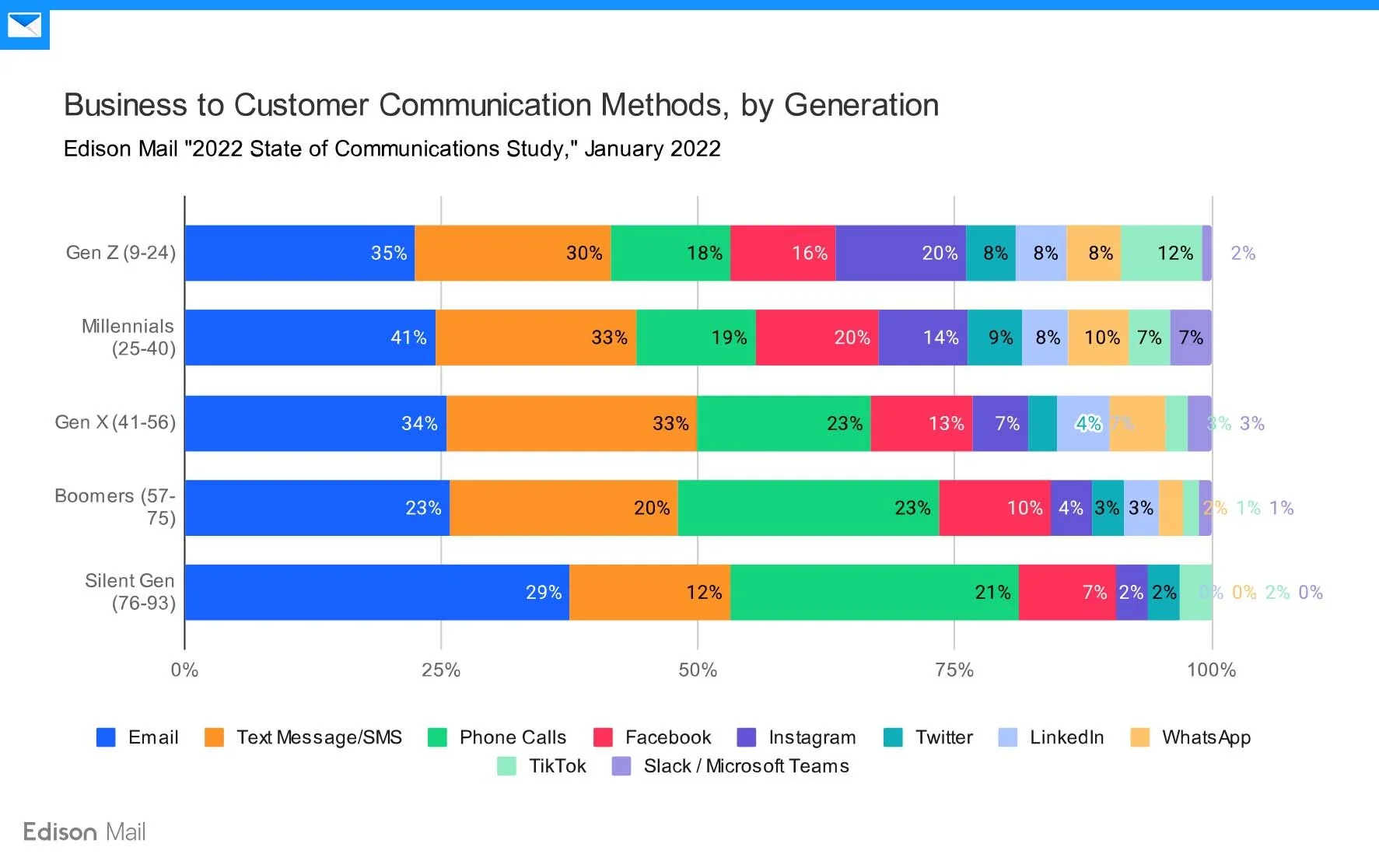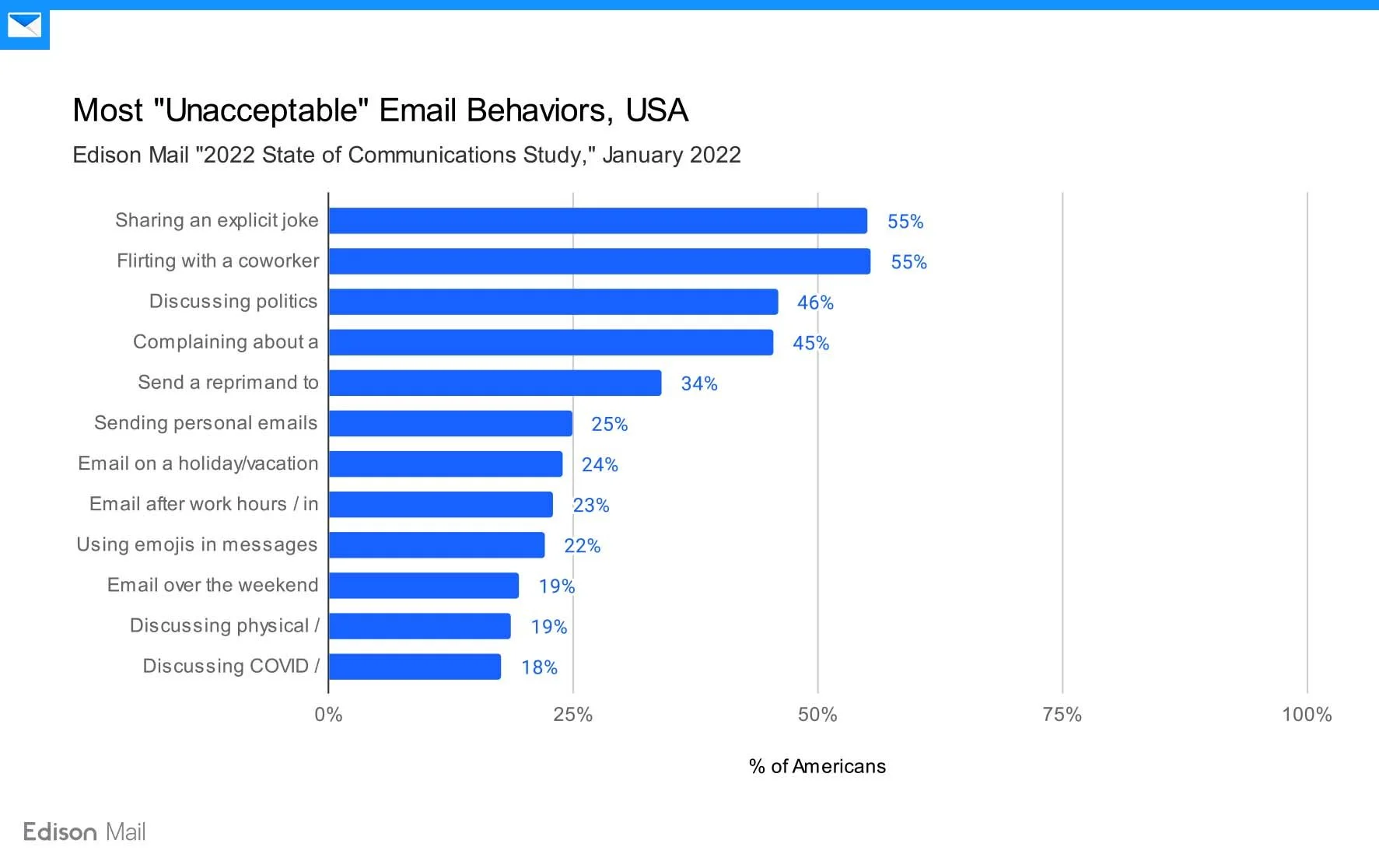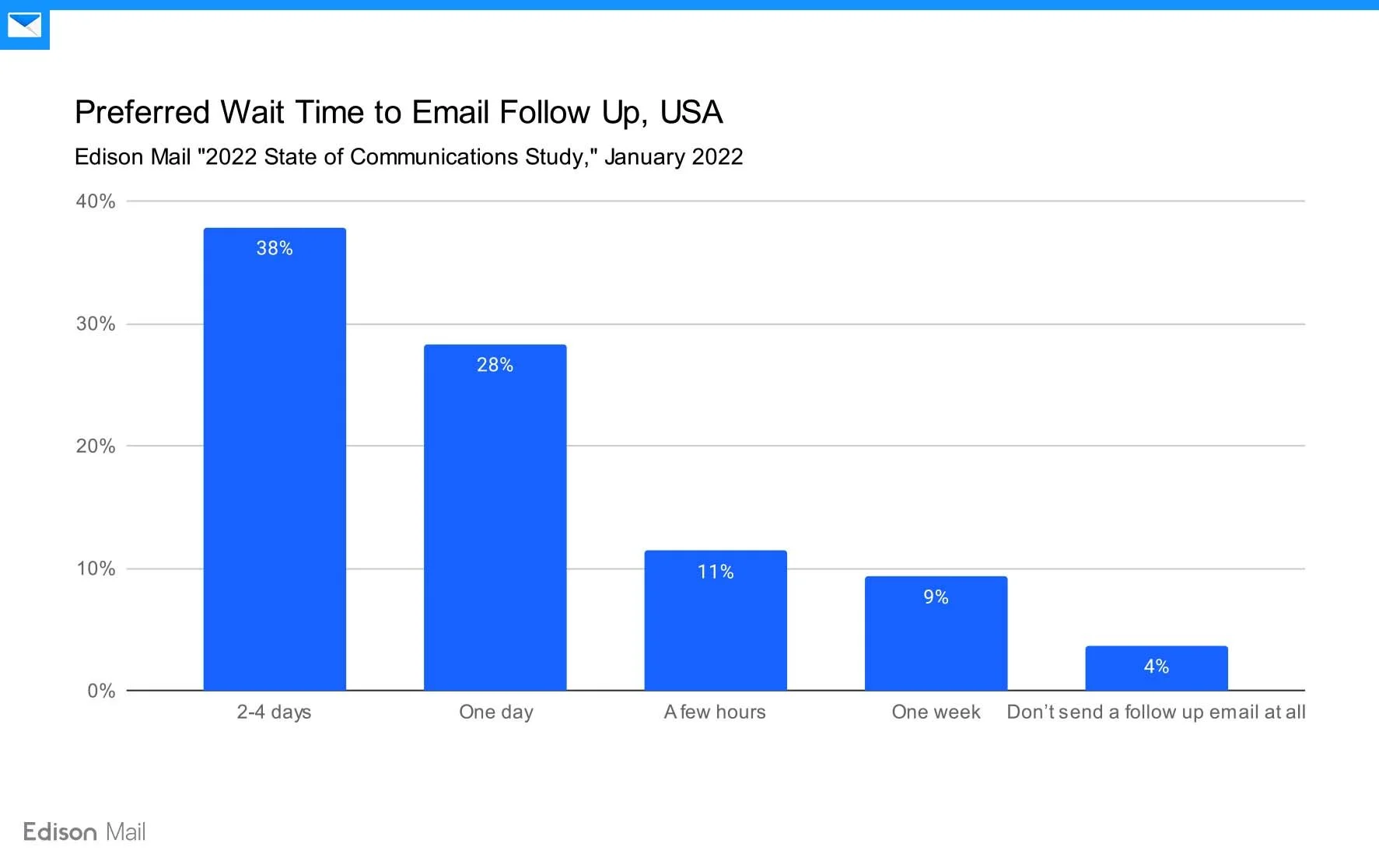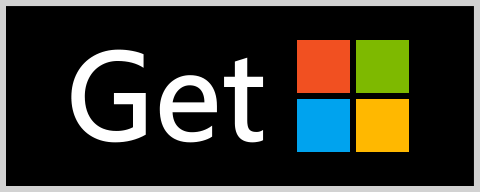38% of Americans Say Wait 2-4 Days to Send a Follow-up Email
A Small Margin (4%) Say Don’t Send One At All
Half (48%) of Americans own or manage a business or work as a freelance professional, and 94% of them use communication technology to connect with customers.
Email is their #1 method (33%), followed by text message/SMS (29%) and phone calls (21%).
30% or more of Gen X, Millennials, and Gen Z surveyed said an increase in email volume was a source of job difficulty in 2021.
Generation X is more likely than any other generation to find certain email behaviors unacceptable–including flirting with a coworker (65%), sharing an explicit joke (64%), complaining about a coworker (54%), and discussing politics (53%).
Americans are most likely to prefer you wait 2-4 days (38%) to follow up on an email.
Email has evolved from its time as the main line of internal and external communication in the workplace to become one of numerous lines of communication available to us. With the rise of social media, SMS, and messaging applications, the ways in which we are able to communicate within a professional setting has multiplied.
And yet, despite how many different email-adjacent tools have emerged over the last few decades (from Slack and Microsoft Teams to Google Meet and Zoom), email still remains one of the most popular forms of professional communication, as shown by Edison Mail’s 2022 State of Workplace Email survey. This survey also highlights the generational differences in workplace communication usage as well as what email behaviors are seen as most and least acceptable.
Figure 1: Results are from an online survey questionnaire developed by Edison Mail and fielded nationally online by SurveyMonkey within the US on January 13, 2022 among 1,112 adults ages 18 and older.
Businesses owners & freelance pros rely most on email—but SMS is a close second
Nearly half (48%) of Americans own or manage a business or work as a freelance professional. Among those business professionals, 94% use communication technology to connect with their customers with 33% of them using email—more than text messaging/SMS (29%), phone calls (21%), Facebook (15%), and Instagram (10%).
Figure 2: Results are from an online survey questionnaire developed by Edison Mail and fielded nationally online by SurveyMonkey within the US on January 13, 2022 among 1,112 adults ages 18 and older.
Consistently across generations, employees of businesses use email more than any other method to communicate with customers, with text messages following close behind. Text messages are followed by phone calls and all generations are more likely to make a phone call to their customers than contact them via LinkedIn.
Unsurprisingly, young business owners are more comfortable than owners in older generations communicating with their customers via social media platforms such as Instagram, Twitter, and TikTok.
Figure 3: Results are from an online survey questionnaire developed by Edison Mail and fielded nationally online by SurveyMonkey within the US on January 13, 2022 among 1,112 adults ages 18 and older.
Causes of increased job stress vary by generation
As we covered in our 2022 State of Communications study, barriers to job productivity included increases in email volume, increased video calls, and more. Here we can see that breakdown by generation.
30% or more of Gen X, Millennials, and Gen Z surveyed said increased email volume was a source of job difficulty in 2021 while only 22% of Baby Boomers said the same. In a similar divide, Gen X, Millennials, and Gen Z were all more likely than older generations to say that increased chat messages were a job difficulty for them. What Zoomers and Boomers have in common however is that both generations were less likely to say that the addition of new communications tools were a source of job difficulty for them than Gen X (20%) and Millennials (18%).
Figure 4: Results are from an online survey questionnaire developed by Edison Mail and fielded nationally online by SurveyMonkey within the US on January 13, 2022 among 1,112 adults ages 18 and older.
What’s taboo for email?
Nearly all (95%) Americans consider email etiquette (demonstrating good manners) important when sending emails. When it comes to the rules of email communication, there are a few areas where over half of Americans agree. Around half (55%) of Americans find it unacceptable to share an explicit joke or to flirt with a coworker over email.
Just under 50% find it unacceptable to discuss politics or complain about a coworker via email. Other taboo email behaviors include sending a reprimand (34%), sending personal emails (25%), email on holiday/vacation (24%), email after work hours / in the middle of the night (23%), using emojis in messages (22%), emailing over the weekend (19%), discussing physical / mental health (19%), and discussing COVID / the coronavirus pandemic (18%).
Interestingly, Generation X is more likely than any other generation to find certain email behaviors unacceptable–including flirting with a coworker (65%), sharing an explicit joke (64%), complaining about a coworker (54%), and discussing politics (53%).
The greatest difference is complaining about a coworker: Women label this as inappropriate more often than men.
Figure 5: Results are from an online survey questionnaire developed by Edison Mail and fielded nationally online by SurveyMonkey within the US on January 13, 2022 among 1,112 adults ages 18 and older.
Figure 6: Results are from an online survey questionnaire developed by Edison Mail and fielded nationally online by SurveyMonkey within the US on January 13, 2022 among 1,112 adults ages 18 and older.
How soon is too soon to respond?
The etiquette around following up on email can be tricky. How soon is too soon or too long? When it comes to sending an email follow-up if your message has not been responded to, Americans are most likely to prefer you wait 2-4 days (38%), however men seem to wait less time before sending follow-up emails than women. On average, nearly one third (28%) think it is OK to wait one day before sending a follow-up. 1 in 10 (11%) find waiting only a few hours acceptable while another small margin of Americans (4%) prefer you do not send a follow up at all.
“As more employers are looking into permanent remote or hybrid work situations, the rules around email are more important now than ever before,” said Edison Mail’s Vice President of Marketing, Hetal Pandya. “With less face-to-face contact between colleagues, understanding what email behaviors are appropriate and learning proper email etiquette is essential to be successful in the workplace.”
Managing email in the workplace has only become a bigger issue in recent years, which is why email apps like Edison Mail have built features to help those in the workforce. From Contacts which give you all the information and exchanges you’ve had with an individual in one place, Templates to save you the hassle of rewriting the same email over and over again, and Edison Mail+ which, among other features, gives you the ability to quickly locate a person’s LinkedIn profile. The #1 independent email app on the App Store, Edison Mail was designed for today’s era as employers and employees search for a way to better use email in the workplace.
Edison Mail is available on the App Store, Mac App Store, and Play Store.
Download the Edison Mail App Today
Learn more about how you can use Edison Mail for iOS, Mac, and Android to their fullest potential. Reduce spam, and access your favorite email services like Gmail, Yahoo, Microsoft Exchange, Comcast, and more in a clean unified inbox.












